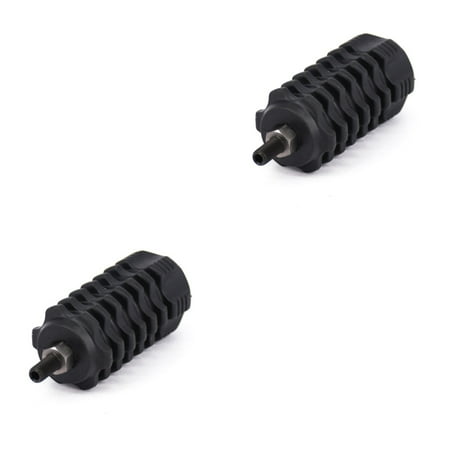Master Your Aim with High-Quality Bow Stabilizers: Store Currently!
Maximize Your Archery Accuracy With These Bow Stabilizer Methods
In the world of archery, attaining optimum accuracy is a pursuit that demands precise interest to information and technique. One vital component that can significantly impact your performance is the proper usage of bow stabilizers. These often-overlooked accessories hold the prospective to raise your shooting efficiency to new heights, but only if employed correctly. By discovering the nuanced techniques of picking, setting up, and tweak bow stabilizers, archers can unlock a realm of precision that might have formerly thwarted them. Whether you are a skilled archer seeking to fine-tune your skills or a beginner excited to enhance your accuracy, understanding these bow stabilizer strategies can be the secret to hitting your mark with unrivaled consistency.
Benefits of Making Use Of Bow Stabilizers
Utilizing bow stabilizers can dramatically improve an archer's precision and overall efficiency by minimizing bow torque and vibration. In addition, bow stabilizers dampen resonance, which not just improves the convenience of capturing but additionally prevents the bow from jumping upon launch, thus aiding in keeping correct objective.
In addition, bow stabilizers can assist in holding the bow consistent, specifically during windy conditions or when firing from longer ranges. The added weight at the front of the bow offers security and equilibrium, enabling the archer to concentrate on intending without the interruption of bow motion. On the whole, the advantages of using bow stabilizers extend beyond just precision, boosting the archer's experience and efficiency in various shooting scenarios.
Selecting the Right Bow Stabilizer
Selecting the ideal bow stabilizer is critical for maximizing your archery tools and enhancing shooting performance. Heavier stabilizers can aid lower bow torque and take in more resonance, leading to a steadier purpose.

Lastly, think about the design of the stabilizer. Some stabilizers include flexible weights or dampeners that allow you to personalize the equilibrium and feel of your bow. Inevitably, picking the right bow stabilizer includes locating an equilibrium between weight, style, product, and size to enhance your capturing precision and overall performance.
Appropriate Installation Techniques
To guarantee ideal performance and safety in archery, mastering proper installation techniques for your bow stabilizer is important. The first step in mounting a bow stabilizer is to sites recognize the proper positioning on your bow.
Next, firmly connect the stabilizer to the bow using the appropriate placing hardware. Some stabilizers come with flexible weights that can be included or removed to fine-tune the equilibrium of your bow.

Changing Stabilizer Weight and Size
After ensuring the proper setup of your bow stabilizer, the following action entails adjusting the weight and length to enhance its efficiency in enhancing archery precision. The weight of the stabilizer plays an important duty in lessening bow activity during the shot cycle. Adding weight to the click over here now stabilizer can assist improve and moisten resonances stability, leading to more consistent and accurate shots. On the various other hand, minimizing the weight can boost maneuverability, which is beneficial for situations needing fast target procurement.
A longer stabilizer can provide better security by raising the distance in between the bow and the weight at the end of the stabilizer. Alternatively, a much shorter stabilizer provides much more maneuverability and may be preferred by archers that value dexterity and quick movements throughout capturing.
Advanced Stabilizer Tuning Tips
Accomplishing optimal bow stability and precision in archery requires a nuanced method to innovative stabilizer adjusting. Advanced stabilizer tuning entails fine-tuning different elements to improve the bow's equilibrium, reduce vibration, and boost general accuracy. One crucial strategy is to explore various stabilizer setups, including back-bar and side-bar configurations, to find the perfect equilibrium between security and maneuverability for your capturing style. bow stabilizer. Furthermore, readjusting the angle and positioning of the stabilizer can have a considerable effect on just how the bow reacts upon release.
An additional vital facet of innovative stabilizer adjusting is maximizing the damping buildings of the stabilizer system. This can be attained by integrating extra dampening devices such as rubber dampeners or harmonic stabilizers to better minimize resonance and sound. Furthermore, discovering various products for the stabilizer building, such as carbon fiber or aluminum, can likewise affect the bow's performance by altering its weight distribution and tightness. By thoroughly fine-tuning these innovative stabilizer elements, archers can optimize their precision and consistency on the array or in competitors.
Conclusion
In conclusion, making best use of archery accuracy can be attained with the appropriate choice, installment, and adjustment of bow stabilizers. Overall, incorporating bow stabilizers into archery practice can lead to enhanced performance and raised accuracy.
Utilizing bow stabilizers can substantially improve an archer's accuracy and overall efficiency by minimizing bow torque and resonance. Longer stabilizers supply better security and equilibrium, specifically for long-distance capturing, while much shorter stabilizers provide more adaptability and are much easier to navigate in tight areas (bow stabilizer). Carbon my explanation fiber stabilizers are lightweight and durable, while light weight aluminum stabilizers are robust and give superb resonance moistening
A longer stabilizer can offer greater stability by raising the distance in between the bow and the weight at the end of the stabilizer.One more crucial element of advanced stabilizer adjusting is optimizing the damping properties of the stabilizer system.